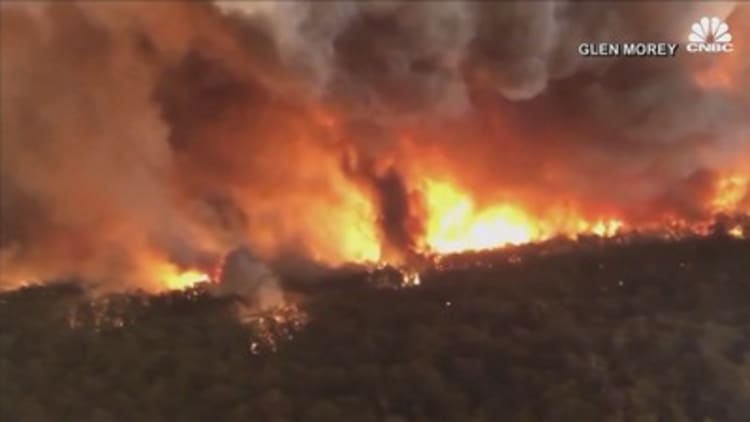Authorities issued new warnings and evacuation notices across southeast Australia on Thursday, as a return of hot weather fanned huge bushfires threatening several towns and communities.
A disaster level notice in large parts of Victoria state, already in place for the past week, was extended by 48 hours and people in danger zones were advised to leave if it was safe to do so.
"Don't get complacent from the rain we have had recently," Victoria Emergency Services Minister Lisa Neville said in a televised briefing, referring to several days of cool weather that has allowed firefighters to strengthen containment lines around blazes that have been burning for months.
"These fires are absolutely still moving, still growing in our landscape and they pose significant risk to communities," Neville said.
Twenty-six people have died, thousands have been made homeless and thousands of others have had to evacuate repeatedly as the monster fires have scorched through more than 10.3 million hectares (25.5 million acres) of land - an area the size of South Korea.

Authorities have said the blazes will continue to burn, posing extreme danger at times of high temperatures and winds, until the country experiences significant rainfall.
The official weather agency on Thursday confirmed fears that there was no sign of that happening in the next few months as it released its annual report, which also showed that 2019 was Australia's hottest and driest year on record.
The current crisis was sparked into life following a three-year drought that has left much of the country's bushland vulnerable to fires.
Many towns were without power and telecommunications and some were running low on drinking water supplies. Smoke has blanketed Sydney, Melbourne and Canberra, and drifted as far as South America.
Parts of Kangaroo Island, a wildlife-rich tourist spot off the country's southeast coast where Prime Minister Scott Morrison on Wednesday made a plea for foreign tourists not to be deterred by the fires, were again evacuated on Thursday. A third of the island has already been destroyed by fires.

